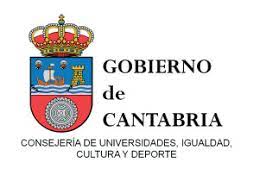Designio divino y albedrío humano enLas lágrimas de David, una comedia bíblica de Felipe Godínez
DOI:
https://doi.org/10.55422/bbmp.331Palabras clave:
Asistencia de Dios, David, Alianza, Hado, Designio divinoResumen
La comedia bíblica Las lágrimas de David, de Felipe Godínez, dibuja una caracterización de las decisiones del monarca que se aviene bien con las presuposiciones de la así llamada ‘narrativa de Sucesión’ (2 S 9-20, 1 K 1.2), pero asimismo, y al igual que en las consideraciones pre-davídicas acerca del poder de Dios, Él sólo es quien actúa a través de una presencia que todo lo abarca, aun si conceptos como hado, agüero, oráculo o azar se entrelazan en los versos de la comedia pareciendo interrumpir el decurso de la trama.
Descargas
Publication Facts
Reviewer profiles N/D
Author statements
Indexado: {$indexList}
- Academic society
- Sociedad Menéndez Pelayo
- Editora:
- Sociedad Menéndez Pelayo
Estadísticas globales ℹ️
|
182
Visualizaciones
|
123
Descargas
|
|
305
Total
|
|
Citas
ACKERMAN, JamesS..(1990). “”Knowing Good and Evil: a Literary Analysis of the Court History in 2 Samuel 9-20 and 1 Kings 1-2”. Journal of Biblical Literature. 109. 40-65. DOI: https://doi.org/10.2307/3267328
ACKERMAN, JamesS..(1991). “Who Can Stand before Yhwh, This Holy God? A Reading of 1 Samuel 1-15”.Prooftexts. 11. 1-25.
AMIT, Yairah.(1992). “The Glory of Israel Does not Deceive or Change His Mind: On the Reliability of Narrator and Speakers in Biblical Narrative”.Prooftexts.12. 201-212.
ANÍBAL, ClaudeE..(1925). “Voces del cielo: A Note on Mira de Amescua”.The Romanic Review. 16. 57-70.
ANÍBAL, ClaudeE..(1927). “Another Note on the Voces del cielo”.The Romanic Review.18. 57-70.
ASENSIO, Félix.(1944). “Un aspecto de la asistencia divina en el Antiguo Testamento”.Sal Terrae. 32. 689-697.
ASENSIO, Félix.(1945). “Un aspecto de la asistencia divina en el Antiguo Testamento”. Sal Terrae. 33. 23-26.
BOLAÑOS DONOSO, Piedad.(1983). La obra dramática de Felipe Godínez (Trayectoria de un dramaturgo marginado). Sevilla:Excma. Diputación Provincial de Sevilla.
BOSWORTH, DavidA..(2006). “Evaluating King David: Old Problems and Recent Scholarship”. TheCatholicBiblicalQuarterly 68. 191-200.
COVARRUBIAS OROZCO, Sebastián de.(1611). Tesoro de la lengua castellana, o española. En Madrid, por Luis Sánchez, impresor del Rey, N. S..
COVARRUBIAS OROZCO, Sebastián de. (2006). Tesoro de la lengua castellana o española. I. Arellano y R. Zafra (eds.). Madrid: Universidad de Navarra-Iberoamericana-Vervuert-Real Academia Española-Centro para la edición de clásicos españoles.
DÍAZ JIMENO, Felipe.(1987). Hado y fortuna en la España del siglo XVI.Madrid. Fundación Universitaria Española.
ESTEVA DE LLOBET, Lola.(2013). “Poder humano y potestad divina en el teatro de Tirso de Molina: El burlador de Sevilla y El condenado por desconfiado”. Teatro y poder en el Siglo de oro: 95-108. M. Insúa y F. Schmelzer (coords.) Pamplona: Servicio de publicaciones de la Universidad de Navarra.
FAUR, José(1986). Golden Doves with Silver Dots: Semiotics and Textuality in Rabbinic Tradition. Bloomington. Indiana UniversityPress.
FILÓN DE ALEJANDRÍA. (2009). Obras completas. Volumen I. Madrid: Editorial Trotta.
FRETHEIM, TerenceE..(1985). “Divine Foreknowledge, Divine Constancy and the Rejection of Saul’s Kingship”.The Catholic Biblical Quarterly.47. 595-602.
GARCÍA-MORENO, Antonio. (1977). “Juan de Pineda, exégeta de Job”. Estudios bíblicos.35. 20-44-
GEORGE, MarkK..(2002). “Yhwh’s Own Heart”.The Catholic Biblical Quarterl.y 64.442-459.
GODÍNEZ, Felipe(2013). Las lágrimas de David. Ed. G. Vega García-Luengos, Canon 60 delTC/12 (Patrimonio del teatro clásico español. Textos e instrumentos de investigación), http://tc12.uv.es/index.php/produccion-cientifica/edicion-del-patrimonio-teatral/canon-60.
GOWAN, Donald E..(1994). Theology in Exodus.Biblical Theology in the Form of a Commentary.Louisville. Westminster. John KnoxPress.
GREEN, OtisH..(1969). España y la tradición occidental. El espíritu castellano en la literatura desde “El Cid” hasta Calderón. 4 volúmenes. Madrid. Editorial Gredos. El original en inglés es de 1964.
HERSKOVITS, Andrew. (2005). The Positive Image of the Jew in the ‘Comedia’. Nueva York. Peter Lang. DOI: https://doi.org/10.1353/boc.2012.0003
HERSKOVITS, Andrew. (2008). “The Judaization of Christianity in Felipe Godínez’sEster Plays”.Bulletin of theComediantes. 60. 51-70. DOI: https://doi.org/10.1353/boc.2008.0007
HUGHES, AnnN..(1984). Religious Imagery in the Theater of Tirso de Molina. Macon. Georgia.Mercer University Press.
JANZEN, David. (2012).”The Condemnation of David’s “Taking” in 2 Samuel 12: 1-14”. Journal of Biblical Literature. 131. 209-220. DOI: https://doi.org/10.2307/23488221
JOHNSON, Benjamin J. M..(2012). “The Heart of YHWH’s Chosen One in 1 Samuel”.Journal ofBiblical Literature. 131. 455-466. DOI: https://doi.org/10.2307/23488249
KRAUS, Hans-Joachim.(1967). “Der lebendigeGott”.Evangelische Theologie.27.169-200. DOI: https://doi.org/10.14315/evth-1967-0401
KURTZ, Barbara E..(1986-1987). “The Agriculturachristiana of Juan de Pineda in the Context of RenaissanceMytography and Encyclopedism”.Inti.Revista de literaturahispánica. 24-25. 191-202.
KUTSCH, Ernst. (1956).”GideonsBerufung und AltarbauJdc 6, 11-24”.TheologischeLiteraturzeitung. 81. 75-84.
LEWIS, TheodoreJ..(2013). “Divine Fire in Deuteronomy 33:2”.Journal of Biblical Literature. 132. 791-803. DOI: https://doi.org/10.1353/jbl.2013.0057
LOFTHOUSE, W. F..(1933). “Hen and Hesed in the Old Testament”.Zeitschriftfür die AlttestamentlicheWissenchaft.51. 29-35. DOI: https://doi.org/10.1515/zatw.1933.51.1.29
LÓPEZ DE VEGA, Antonio. (2005). Paradojas racionales. En forma de diálogo entre un filósofo y un cortesano. Ed., intr., y notas de M. Higuera. Madrid: Editorial Trifaldi.
MAIMONIDES,Moisés. (1994). Guía de Perplejos. Ed. y trad. de D. Gonzalo Maeso. Madrid.Trotta.
MENÉNDEZ ONRUBIA, Carmen. (1982). “Hacia la biografía de un iluminado judío. Felipe Godínez (1585-1659)”.Segismundo.25-26. 1-42.
MISCALL, Peter. (1983).The Workings of Old Testament Narrative. Filadelfia.Fortress Press.
MURPHY, Roland E. O. Carm. (1985). “Wisdom and Creation”.Journal of Biblical Literature.104. 3-11. DOI: https://doi.org/10.2307/3260589
NÚÑEZ, César. A. (2007). “Un solitario en la corte. Las paradoxas nacionales de Antonio López de Vega”.Nueva revista de filologíahispánica. 55. 77-119. DOI: https://doi.org/10.24201/nrfh.v55i1.2347
PARK, Song-Mi Suzie. (2008). “The Frustration of Wisdom: Wisdom, Counsel, and Divine Will in 2 Samuel 17: 1-23”.Journal of Biblical Literature. 128. 453-467. DOI: https://doi.org/10.2307/25610196
PARKS, Ted. (1997). “Religion and Politics in Felipe Godínez’sEl divino Isaac”.Bulletin oftheComediantes. 49. 55-66. DOI: https://doi.org/10.1353/boc.1997.0010
PERDUE, I.eoG..(1984). “Is Anyone Left of the House of Saul? Ambiguity and the Characterization of David in the Succession Narrative”.Journal for the Study of the Old Testament. 30. 67-84. DOI: https://doi.org/10.1177/030908928400903004
PINEDA, O. F. M. Juan de.(1589). Diálogos familiares de Agricultura Christiana. Salamanca.
PINEDA, O. F. M. Juán de. (1963). Diálogos familiares de la Agricultura Cristiana, ed. P. J. Meseguer Fernández, O. F. M. BAE: Madrid.
RAMBELLI, Eda. (1950). Juan de Pineda, humanista, estudiado en la Agricultura Christiana. México. Universidad nacional autónoma de México. Facultad de filosofía y letras.
RANCHAWARGER, J. (1978). “Comedic Transformation of Biblical and Legendary Sources in Felipe Godínez’sLos trabajos de Job”, RomanistischesJahrbüch 29: 303-321. DOI: https://doi.org/10.1515/9783110244861.303
SAKENFELD, Katharine D..(1978). The Meaning of Hesed in the Hebrew Bible. Missoula, MT: Scholars Press. DOI: https://doi.org/10.1163/9789004386778
SHERGOLD, N. D. y Varey, J. E. (1963). “Some Palace Performances of Seventeenth-Century Plays”.Bulletin of Hispanic Studies. 40. 212-244. DOI: https://doi.org/10.1080/1475382632000340212
SICKER, Martin.(2001). Between Man and God.Issues in Judaic Thought. Westport. Connecticut.Greenwood Press.
SORG, Dom Rembert. (1953). Hesed and Hasid in the Psalms. St. Louis.PioDecimo Press.
STERNBERG, Meir.(1985). The Poetics of Biblical Narrative. Ideological Literature and the Drama of Reading. Bloomington.Indiana University Press.
SULLIVAN, HenryW..(1976).Tirso de Molina and the Drama of the Counter-Reformation.Ámsterdam.Rodopi.
VALENCIA. Juan O.. 1977. Pathos y tabú en el teatro bíblico del Siglo de Oro. Madrid. Ediciones y distribuciones Isla.
VEGA GARCÍA-LUENGOS, Germán. (1986). Problemas de un dramaturgo del Siglo de oro. Estudios sobre Felipe Godínez. Con dos comedias inéditas. Valladolid. Secretariado de Publicaciones de la Universidad de Valladolid.
VEGA GARCÍA-LUENGOS, Germán(1989). “Una edición crítica para Las lágrimas de David, la comedia más difundida de Felipe Godínez”. La edición de textos. Actas del I Congreso Internacional de Hispanistas del Siglo de Oro. P. Jauralde, D. Noguera,y A. Rey (coords.) (Madrid, 1987): 483-491. Londres: Támesis Books.
VON RAD, Gerhard von. (1972). Wisdom in Israel.Nashville. AbingdonPress.
WIENER, Claude. 1957. Recherches sur l’amour pour Dieu dans l’Ancient Testament. París.LetouzeyetAne.
WOLFSON, Harry. A. (1947).Philo.2 volúmenes. Cambridge, Massachussets.Harvard University Press.
WRIGHT, John W. (1998). “The Founding Father: The Structure of the Chronicler’s David Narrative”.Journal of Biblical Literature. 117. 45-59. DOI: https://doi.org/10.2307/3266391
ZIMRAN, Yisca. (2014). “”The Convenant Made with David”. The King and the Kingdom in 2 Chronicles 21”. VetusTestamentum. 64. 305-325. DOI: https://doi.org/10.1163/15685330-12301153
Descargas
Publicado
Cómo citar
Número
Sección
Licencia

Esta obra está bajo una licencia internacional Creative Commons Atribución-NoComercial 4.0.








